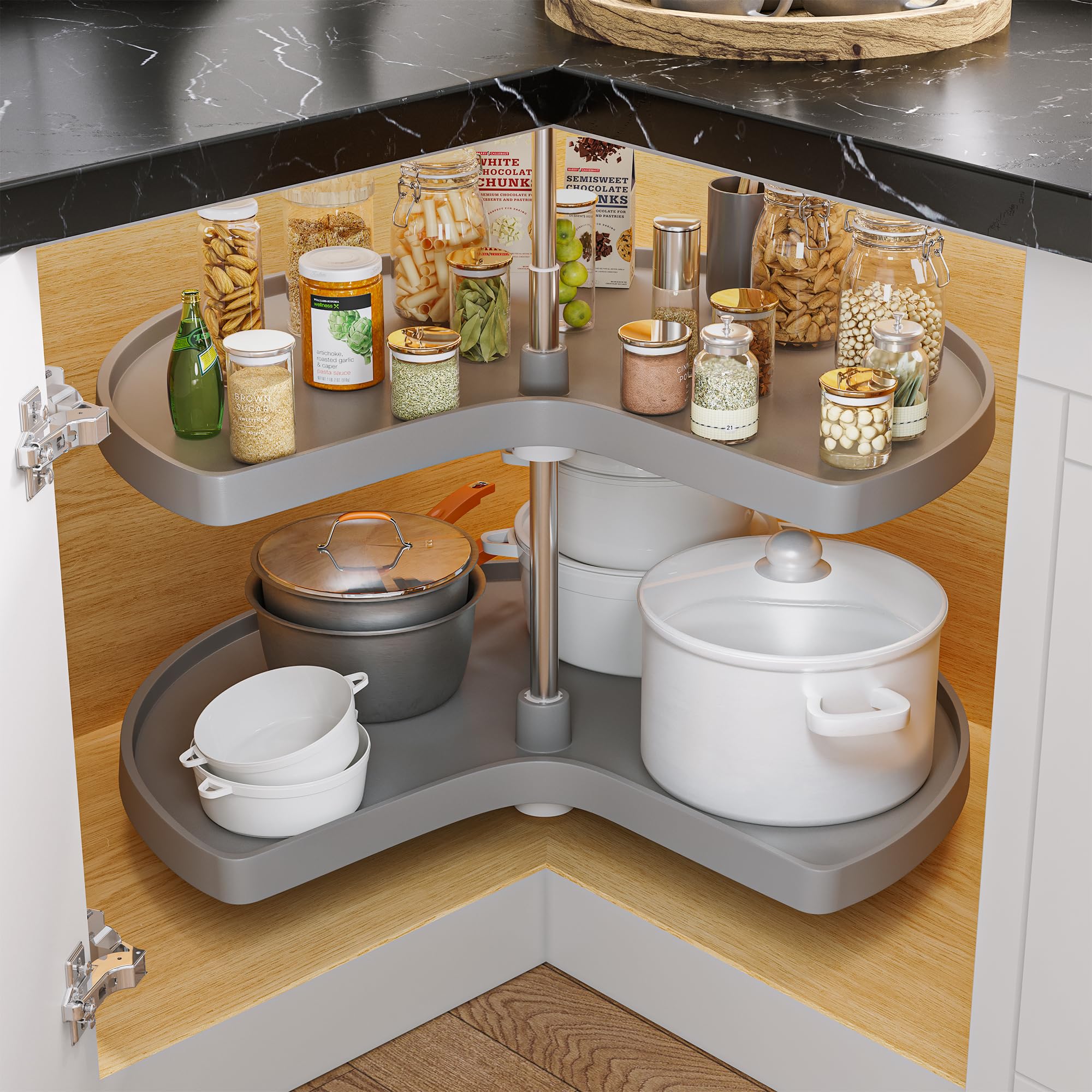Lazy Susan for Inside Cabinets: The Ultimate Guide
A Lazy Susan is a rotating tray often used in cabinets to maximize storage space and improve accessibility. It's a fantastic solution for organizing and retrieving items in your kitchen, making it easier to find what you need without rummaging through cluttered shelves. Here’s everything you need to know about choosing and installing a Lazy Susan for inside cabinets.
Benefits of a Lazy Susan
- Maximizes Space: Utilizes the often wasted corner or deep cabinet spaces.
- Improves Accessibility: Rotates to bring items at the back to the front with a simple spin.
- Reduces Clutter: Keeps items organized and easily visible.
- Versatile: Suitable for various items like spices, canned goods, pots, and pans.

(lazy susan wood)
Types of Lazy Susans
-
Full Circle Lazy Susan
- Shape: Round
- Usage: Ideal for round or square cabinets without a center pole.
- Benefits: Provides maximum storage space.
-
Half-Moon Lazy Susan
- Shape: Half-circle
- Usage: Best for cabinets with a hinged door, typically used in blind corner cabinets.
- Benefits: Swings out for easy access.
-
D-Shaped Lazy Susan
- Shape: Resembles the letter D.
- Usage: Fits well in corner cabinets.
- Benefits: Flat edge allows it to sit flush with the cabinet door.
-
Kidney-Shaped Lazy Susan
- Shape: Kidney bean shape
- Usage: Perfect for L-shaped corner cabinets.
- Benefits: Maximizes the use of awkward corner spaces.

(Kidney-Shaped Lazy Susan)
Materials
- Plastic: Lightweight, affordable, and easy to clean.
- Wood: Offers a classic look, sturdy but may require more maintenance.
- Metal: Durable and often has a sleek, modern design. Ideal for heavier items.
Choosing the Right Lazy Susan
-
Measure Your Cabinet
- Width and Depth: Ensure the Lazy Susan fits comfortably within your cabinet space.
- Height: Consider the height of items you plan to store and choose adjustable height models if needed.
-
Consider Weight Capacity
- Check the maximum weight capacity of the Lazy Susan to ensure it can handle the items you plan to store.
-
Type of Items Stored
- For spices and small items, a two-tier Lazy Susan might be ideal. For pots and pans, a sturdier single-tier version might work better.
-
Ease of Installation
- Some models require professional installation, while others can be easily installed with basic tools.
Installation Steps
-
Clear the Cabinet
- Remove any existing items and shelves.
-
Assemble the Lazy Susan
- Follow the manufacturer’s instructions for assembling the Lazy Susan.
-
Position the Base
- Place the base plate or pole in the center of the cabinet. Ensure it is level and mark the screw holes.
-
Secure the Base
- Drill pilot holes and secure the base with screws.
-
Attach the Shelves
- Place the shelves on the pole or base, adjusting the height as needed.
-
Test the Rotation
- Ensure the Lazy Susan rotates smoothly and make any necessary adjustments.
Maintenance Tips
- Regular Cleaning: Wipe down the shelves regularly to prevent the buildup of dust and grime.
- Check for Wear and Tear: Inspect the rotating mechanism and shelves periodically for any signs of damage.
- Avoid Overloading: Do not exceed the recommended weight capacity to ensure smooth operation.
Conclusion
A Lazy Susan is an excellent addition to any kitchen cabinet, providing enhanced organization and easy access to stored items. By choosing the right type and size for your needs and installing it correctly, you can transform your cabinet space and make your kitchen more functional and enjoyable to use.